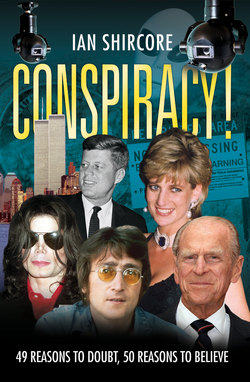Читать книгу Conspiracy! 49 Reasons to Doubt, 50 Reasons to Believe - Ian Shircore - Страница 15
На сайте Литреса книга снята с продажи.
DEATH AND SUSPICION IN SMOLENSK
ОглавлениеThe tragic air crash that killed Poland’s president, Lech Kaczynski, his wife and 94 other Polish VIPs in April 2010 was one of the worst peacetime disasters ever to hit a European Union country.
The heads of Poland’s Army, Navy and Air Force, the security services, the national bank, the Olympic committee and the Polish Church were all killed when their official plane, a Russian-built Tupolev 154, crashed in dense fog while trying to land at the Smolensk air base in Western Russia.
The country’s leaders were flying to Russia for a ceremony to commemorate an earlier national tragedy – the cold-blooded, pre-planned slaughter of 22,000 Poles in 1941. The victims of the original massacre were soldiers, doctors, teachers, lawyers and engineers, all executed 70 years before at Katyn and other places in the Soviet Union by Joseph Stalin’s secret police. Smolensk North, 12 miles east of Katyn, had been chosen as the nearest suitable airfield.
Apart from so many of the leaders of Polish society, the crashed plane carried a dozen relatives of the Katyn massacre victims, MPs, a much-loved Polish actor and a national heroine, Anna Walentynowicz, the 90-year-old ex-crane driver who had originally founded the Solidarity trade union.
Also on the plane was the controversial Deputy Defence Minister, Stanislaw Komorowski. He was the man who, according to WikiLeaks, had poured scorn on the US plan to site a Patriot missile battery with no live missiles in Poland, shouting at the Americans that his country wanted ‘missiles, not potted plants’.
The president’s identical twin brother and political comrade in arms, former Prime Minister Jaroslav Kaczynski, would also have been on board the Tu-154 but had stayed in Poland to look after their mother, who was seriously ill.
The crash happened after the Polish pilots had been advised to divert to Minsk or Moscow on safety grounds. Instead, they ploughed on and tried to make a visual landing in thick fog on an airfield with no form of instrument landing system.
Smolensk Airport has a tricky approach, across an undulating landscape. So much so that, at the point of first impact, 1,200 yards short of the threshold, the plane was actually 50 feet below the level of the runway.
In the end, as the plane came in far too low, it hit the top of the trees, plunged into the forest and burst into flames. There were no survivors.
On the face of it, the accident looked like a clear case of pilot error. But the political dimensions involved meant that few people could accept what had happened at face value, without at least wondering whether there was some conspiracy or cover-up behind it.
The fact that the flight was a pilgrimage to Katyn seemed to encourage grim suspicions. The obscenity of the Katyn massacre had been perpetrated by Soviet Russia, at a time when it was allied to Nazi Germany. Fifteen months later, under attack by Hitler, the Soviet Union had changed sides and made a determined effort to put in place a cover-up and pretend Katyn’s mass graves were the result of a Nazi atrocity. Britain and the US knew it was the Soviets but conspired to keep the secret to avoid embarrassing their new ally, Stalin. And it wasn’t until 1990, under Mikhail Gorbachev, that the Russians finally admitted responsibility.
